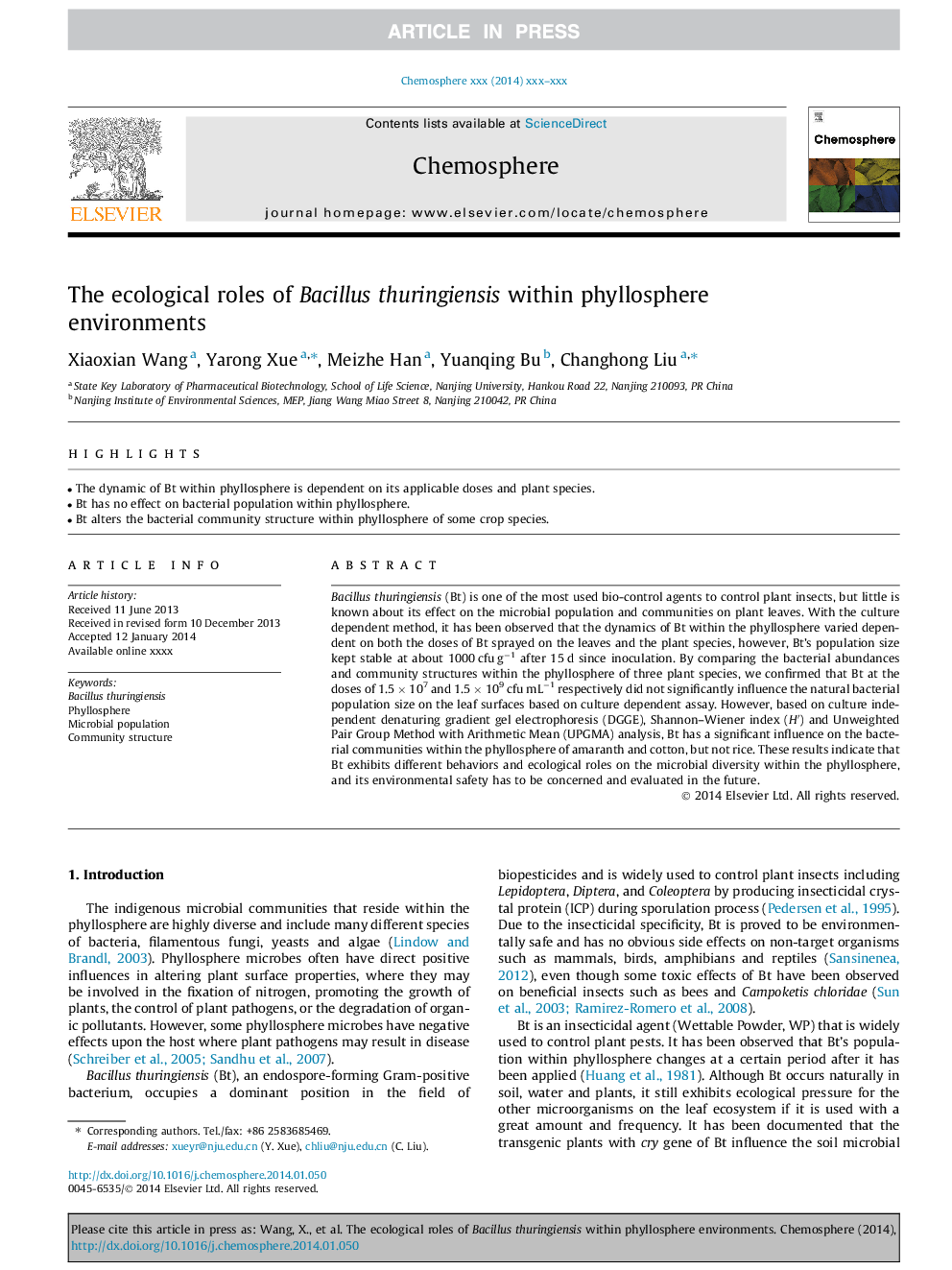| Article ID | Journal | Published Year | Pages | File Type |
|---|---|---|---|---|
| 6309391 | Chemosphere | 2014 | 7 Pages |
Abstract
Bacillus thuringiensis (Bt) is one of the most used bio-control agents to control plant insects, but little is known about its effect on the microbial population and communities on plant leaves. With the culture dependent method, it has been observed that the dynamics of Bt within the phyllosphere varied dependent on both the doses of Bt sprayed on the leaves and the plant species, however, Bt's population size kept stable at about 1000 cfu gâ1 after 15 d since inoculation. By comparing the bacterial abundances and community structures within the phyllosphere of three plant species, we confirmed that Bt at the doses of 1.5 Ã 107 and 1.5 Ã 109 cfu mLâ1 respectively did not significantly influence the natural bacterial population size on the leaf surfaces based on culture dependent assay. However, based on culture independent denaturing gradient gel electrophoresis (DGGE), Shannon-Wiener index (Hâ²) and Unweighted Pair Group Method with Arithmetic Mean (UPGMA) analysis, Bt has a significant influence on the bacterial communities within the phyllosphere of amaranth and cotton, but not rice. These results indicate that Bt exhibits different behaviors and ecological roles on the microbial diversity within the phyllosphere, and its environmental safety has to be concerned and evaluated in the future.
Related Topics
Life Sciences
Environmental Science
Environmental Chemistry
Authors
Xiaoxian Wang, Yarong Xue, Meizhe Han, Yuanqing Bu, Changhong Liu,
